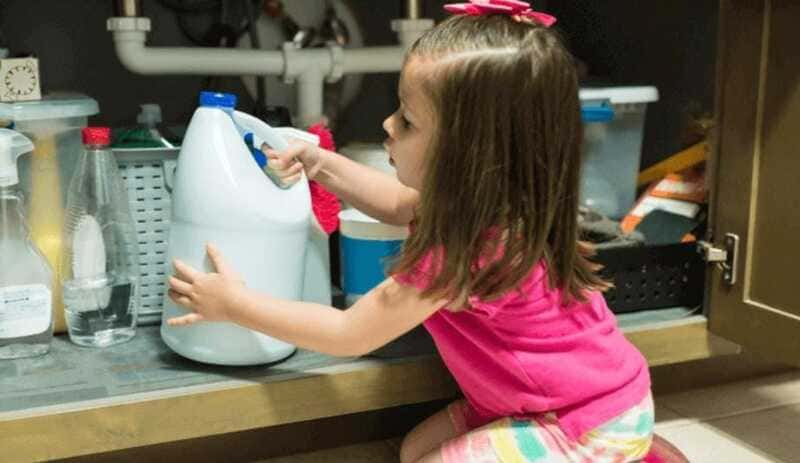The home is a place where we should feel safe and secure, but the reality is that there are many hazards and risks present in our homes that can jeopardize the safety of us and our families.
From sharps and dangerous chemicals, to fires and electrocutions, there are a myriad of hazards that can affect our health and well-being at home. Therefore, it is crucial to know how to identify these hazards and risks in order to prevent and minimize them as much as possible.

In this article, we will explore how to identify hazards and risks at home, as well as techniques and strategies to reduce their impact. We will also discuss the importance of home safety education and how to create an emergency plan to act in the event of a hazardous situation. Read on to learn more about how to keep your home safe and secure for you and your family.
Importance of identifying hazards and risks at home.
The importance of How do you identify hazards and risks at home? Cannot be underestimated. Home is where we spend most of our time, and it is a place where we should feel safe and secure. However, many hazards and risks can affect our safety and the safety of our families at home. From sharp objects and dangerous chemicals to fires and electrocutions, there are a host of hazards present in our home that can cause serious harm.
Identifying these hazards and risks is essential to preventing accidents and minimizing their impact. For example, if we identify an overloaded electrical outlet, we can fix it before it becomes a hazard. If we identify a hazardous chemical, we can store it safely and make sure it is out of reach of children. If we identify a sharp object, we can store it in a safe place away from traffic areas.
In addition to preventing accidents, identifying hazards and risks in the home can also save money on repairs and medical costs. A simple plumbing problem can turn into a costly flood if not identified and fixed in time. A small fire can become a catastrophe if it is not detected in time and proper measures are not taken to put it out.
What is a hazard and what is a risk in the home?
To understand how to identify hazards and risks in the home, it is important to understand the difference between the two terms. A hazard is a situation or condition that can cause physical, emotional or psychological harm to a person. In the home, hazards can include sharp objects, toxic chemicals, poorly lit or slippery stairs, and overloaded electrical outlets, among others.
On the other hand, a risk is the possibility that a particular hazard will develop into a harmful event. In other words, risk is the likelihood that a person will be harmed by a particular hazard. For example, the hazard of a poorly lit stairway is that someone may trip and fall, but the risk of this happening will depend on how often the stairway is used and the lighting available.
It is important to identify both hazards and risks in the home so that preventive measures can be taken to minimize any potential harm. Identifying hazards in the home is the first step in reducing the associated risks and ensuring a safe and healthy environment for the family.
Major hazards and risks in the home.
There are a variety of hazards and risks present in the home that can affect the safety and well-being of individuals. Some of the major hazards in the home include sharp objects, toxic chemicals, faulty appliances, overloaded electrical outlets, poorly lit stairs, slippery floors, and hot water.
Sharps, such as knives and scissors, can cause serious cuts and injuries if not stored properly. Toxic chemicals, such as cleaners and pesticides, can be dangerous if ingested or inhaled. Faulty appliances, such as toasters and ovens, can cause fires or electric shocks. Overloaded electrical outlets can overheat and cause fires. Poorly lit stairs and slippery floors can cause slips and falls, while hot water can cause severe burns.

In addition to these hazards, there are also other hazards that may be present in the home. Fire hazards are one of the most common, and can be caused by a variety of factors, such as faulty electrical appliances, candles and gas stoves. There are also risks related to child safety, such as the presence of toxic products within reach of children, sharp objects or access to dangerous areas such as the kitchen or swimming pool.

It is important to identify these hazards and risks in the home and take preventive measures to minimize their impact. This includes storing toxic chemicals in a safe place, repairing or replacing faulty appliances, installing adequate lighting in stairways and hallways, and keeping floors clean and dry to prevent slips and falls. In short, by paying attention to these hazards and risks in the home, we can ensure the safety and well-being of our family.
How to do a home risk assessment.
To determine how to identify hazards and risks in the home. It is always appropriate to do a home risk assessment. It may seem like an overwhelming task, but it is actually a relatively simple process that can be accomplished by following a few simple steps.
1- Identify potential hazards: The first step is to identify potential hazards in your home. This may include sharp objects, toxic chemicals, faulty appliances, overloaded electrical outlets, poorly lit stairs, slippery floors, hot water, among others.
2- Assess the risk: Once you have identified the potential hazards, it is important to assess the risk associated with each one. This involves considering the frequency of use of the object or area in question, the likelihood of an accident occurring, and the severity of the damage that could result.

3- Take preventive measures: Once you have assessed the risk, it is important to take preventive measures to minimize any potential damage. This may include repairing or replacing faulty appliances, storing toxic chemicals in a safe place, installing adequate lighting in stairways and hallways, and keeping floors clean and dry to prevent slips and falls.
4- Monitor and update: It is important to regularly monitor your home for potential hazards and risks that may arise. In addition, it is advisable to update your risk assessment periodically to make sure it is up to date and covers any new potential hazards.
Performing a home risk assessment can help you ensure the safety and well-being of your family. By taking appropriate preventive measures and regularly monitoring your home, you can minimize any potential harm and enjoy a safe and healthy environment.
How to prevent and reduce hazards and risks in the home?
It is important to take measures to prevent and reduce hazards and risks in the home. Safe storage measures can be taken for toxic chemicals, medicines and sharp objects by keeping them in locked cabinets and out of reach of children. In addition, heavy objects can be stored on shelves or in low cabinets to prevent them from falling.
It is also essential to regularly inspect appliances, plugs and electrical cords for signs of damage or wear. If any problems are found, they should be repaired or replaced immediately. Adequate lighting should be ensured in all areas of the home, especially stairways and hallways, and consider installing night lights to prevent falls in the dark.
The installation of safety devices such as smoke detectors on every level of the house and carbon monoxide alarms near areas where combustion appliances are used is also essential. In addition, measures can be taken to prevent falls, such as making sure floors are clean and dry, and that carpets are secure with non-slip backing, and installing handrails and stair guards.
In the kitchen, never leave the stove on unattended, use properly sized pots and pans to avoid spills, and never leave flammable objects near the stove. In the bathroom, it is important to use non-slip mats on the floor and place safety bars in the shower and near the toilet to help prevent slips and falls.
By taking appropriate preventive measures, you can reduce hazards and risks in the home and ensure the safety and well-being of your family.

